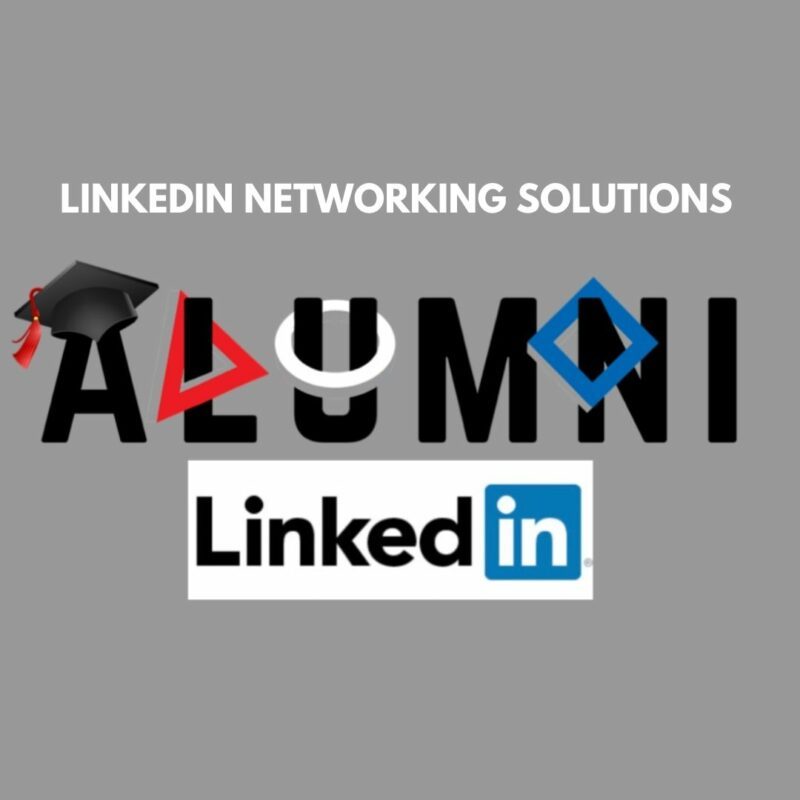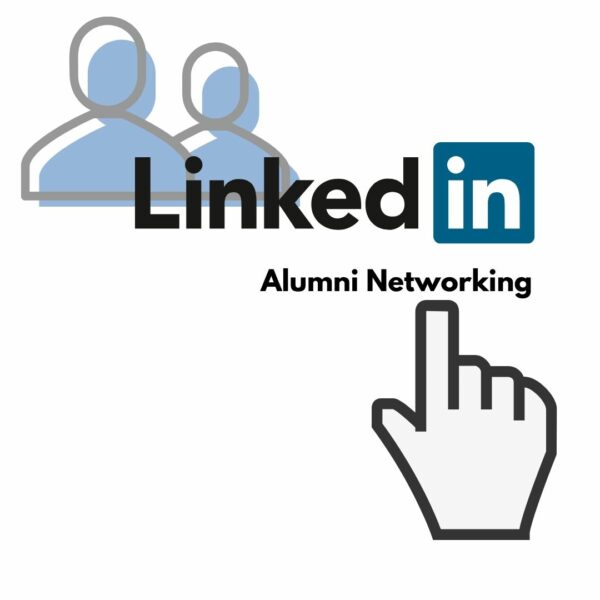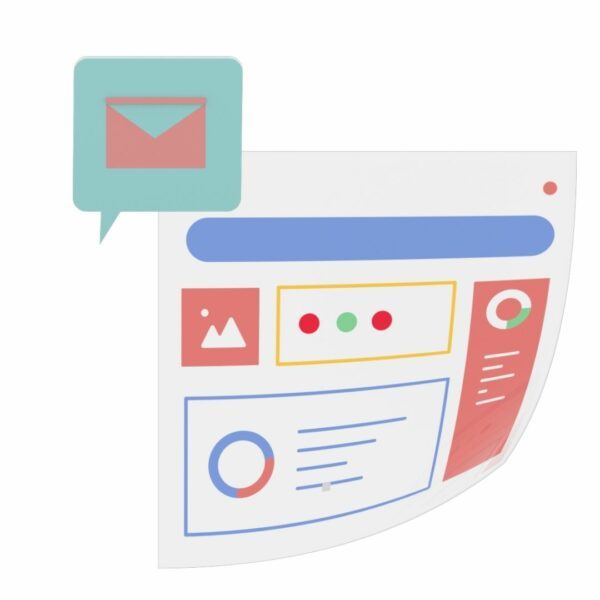
Who doesn’t love LinkedIn? It’s the professional’s playground for networking and engagement. LinkedIn is full of opportunities. If you’re looking to promote your business with your email list, chances are you’ll be reaching out to your contacts on LinkedIn but it can be difficult to find the right outreach templates or to know which of these templates are best suited for your business.
LinkedIn outreach is one of the most important tools for sales and marketing professionals. It’s one of the best ways to build your network, and it can also help you build relationships and grow your customer base. Building and nurturing relationships and connecting with potential clients is very important, but you need to know the right channels to use. One type of connection that is often overlooked is that between a potential client and a potential coach.
This blog post will cover some tips for finding and reaching out to the right people on LinkedIn. If you’re looking to build your coaching practice and reach as many people as possible, you’ll want to take a look at this blog post. I have compiled a handful of templates which you can use to make your LinkedIn outreach email more engaging and more likely to be opened. With these templates, you will be able to increase the success of your outreach emails for your marketing strategy.
Introduction To Networking With Alumni or Graduates
Knowing someone inside the business who can suggest you is one of the most effective methods to help your application be recognized. This connection might assist you in ensuring that your application reaches the decision-makers and does not get lost in the shuffle.
When over 52 individuals apply to a single job posting, it can be challenging to guarantee that yours is seen. Networking is an important component of life since it may lead to doors and possibilities that you were previously unaware of. However, if you believe you did not network as successfully as you should have, LinkedIn provides you with plenty of time and opportunity to do so.
LinkedIn is the most popular and successful professional social network, linking people with their families, friends, and coworkers. These relationships are often founded on a professional working history and can be a wonderful place to begin opening new doors. LinkedIn is one of the strongest networking tools you may have in your arsenal. LinkedIn is also an excellent resource for networking with alumni. Because you will be required to provide your school affiliation on registration, LinkedIn will allow you to see who else attended the same institution.
What exactly is The Alumni Networking Solution?

The Alumni Networking Solution is a 5-step networking technique that will help you introduce yourself to college alumni and build relationships that will lead to recommendations. Instead of a job like everyone else, this involves truly getting to know the individual and asking for their advice.
I utilized these five easy methods to locate a job in the worst employment market in the previous eighty years in around ten minutes each connection.
Step 1: Update Your Career Materials
Make sure your résumé and LinkedIn profile are up to date. Those are the two primary career items your alumni will want to view before agreeing to help you.
The following are the top three issues that should be avoided:
- A less-than-professional LinkedIn profile photo: This will reduce the number of individuals who visit your LinkedIn profile.
- Using the standard generic headline: Every college graduate has a “Recent Major Seeking Entry Level Position” section on their resume.
- A resume riddled with typos: Mistakes make you appear sloppy and unpolished.
If you need more support, check out these networking event tips.
Step 2: Join Your Alumni Group on LinkedIn
Alumni are always eager to provide a hand because you had many experiences, such as living in the same dorms, having the same teachers, and drinking at the same neighborhood bar.
Most significantly, they recall how difficult it was to begin their job.
- Switch the search setting in the upper right corner of your home page to Groups.
- Enter the name of your college, and your alumni group should appear in the search results.
- Select the group, and then click “Join Group.”
You will receive an email verifying your registration in the group; after you receive that message, you will be ready to network!
Step 3: Create an Introduction Letter
Your first – and sometimes only – the impression is made by an interesting message! Consider altering the message below for consistency and simplicity:
Email Template #1
Subject: Good day! A short question from a fellow alumnus
Hello <First Name>, I graduated from <Your College> with a degree in <Your Degree/Major> in <Year Graduated>. I noticed your work in < industry> and was wondering if you would be prepared to talk on the phone at your convenience.
I want to discover more about what you do and any insights or advice you have on getting into the field.
Any assistance would be much appreciated!
Thanks,
Name
Email Phone Number
It is critical to note that the objective of this letter is NOT to apply for a job. “Hi! It’s a pleasure to meet you. “Would you like to hire me?” is ineffective networking. Maintain discretion. Please be patient!
Step 4: Send
Send your pitch email to members of your alumni group who work in an industry of interest to you after carefully personalizing it.
- In the LinkedIn group, navigate to the Members tab.
- Look for graduates who work in the industry you want to work in and alumni in the city where you want to work.
- When you discover a good fit, send them an email.
It is critical to be versatile and explore reaching out to graduates who work for firms where you want to work. Even if they do not work in the same sector as you, they will most likely know someone at the firm to who they can introduce you.
Step 5: Set up Informational Interviews
Set up phone conversations, Skype calls, and face-to-face meetings when the responses start to come in. These informational interviews will allow you to interact with alumni while demonstrating your interest in being an influencer in your chosen profession.
You should soon start receiving leads for available employment through the contacts you build. Many of which aren’t even listed!
Remember that networking is not the same as asking for a job. Networking is the process of expanding your professional network, which may lead to recommendations.
Best Strategies For Networking With Alumni On LinkedIn
You’re not alone if you’ve been yearning to buy new pencils and start the first page of a brand-new notebook. Whether you graduated two years ago or two decades ago, September always seems like the start of a new school year.
This notion of a new beginning might drive job hunters to re-energize their search. The fall season, in particular, is a great time of year to reconnect with members of your college or university’s alumni network, who may be nostalgic for their school days as well (especially if you have a decent football team!).
Here are some ideas for networking and reconnecting with other alma mater graduates:
1. Join your Alumni Community
The first and most vital task is to join your university’s alumni organization on LinkedIn. Almost every college and institution globally, as well as many high schools, has one or more. Search the Groups Directory for the name of any educational institutions you have attended. Some schools will offer many groups, so join as many as interest you.

Once you’ve joined the community, go through the Discussions, Members, and Jobs sections for networking possibilities. For example, join a conversation of fellow alums discussing your profession, comment on an article someone has posted, or represent yourself to the Group Manager, who is frequently an Alumni Association representative (often a very connected and helpful person).
You can also start your debate by uploading an article with your remarks or asking the group members questions. Alternatively, you might introduce yourself and your objectives: “Good day, Tigers: I’m new to the organization and am looking forward to contacting other alumni. I’m presently seeking work as a graphic designer and would love to connect with other job seekers or design professionals. I’m happy to assist anyone that needs it. Thanks!”
Remember that LinkedIn allows you to send a message or a connection request to anybody with whom you share a LinkedIn group (as long as that person has chosen to accept such communications), which will assist you in developing one-on-one connections with individual group members.
2. Tap the LinkedIn Alumni Tool

Your next trip should be LinkedIn Alumni, a tool that tells you where your fellow alums work, what they do, and where they reside. The tool automatically fills in the years you attended a school mentioned on your LinkedIn profile and displays classmates who went simultaneously. You may broaden your search by entering other graduating years.
You may glance into the overall picture of where people work and reside, then refine the findings based on your objectives. Assume you’re searching for a position in public relations at a university or nonprofit in the Chicago region. The tool assists you in narrowing down your large alumni network to people who live in Chicago and work in public relations. Then, you may go through the list of “Where they work” to locate the institutions and charities where your fellow alums work. LinkedIn Alumni will then display the profiles of alums that meet all of your criteria.
Are you thinking about relocating to Milwaukee? Begin a new search and choose that location under “Where they reside,” and all of the data will be updated to show you fellow graduates in that geographic region instead. If you have attended more than one university, you may explore alternative colleges and universities by using the “change school” function at the top of the page.
3. Reach Out (the Right Way)

It’s time to establish contact with some alums in your preferred field and area. While there are no guarantees, other alums are more likely than random strangers to respond to a networking request because you have a shared experience. Here’s how I’d handle an outreach message:
Email Template #2
Hello, Sonya.
I stumbled upon your profile as a fellow ABC University alum. I graduated in 2003 with a degree in History and have spent the last several years working in the public relations profession. I’m now job seeking and trying to go from the agency side to a position at a nonprofit or institution. I respect your job and wondered if you would be prepared to give me some advice or talk on the phone? I would appreciate your time and would be delighted to assist you in any way I can.
Thank you, and good luck to the Tigers!
Lindsey
It’s worth noting that the message instantly highlights the alumni link, is polite and professional, and illustrates that you’ve done your research on the other individual (indicating that you’re not just sending out generic blast messages). You never want to look desperate, and you never want to ask for a job or submit a CV immediately. As with any successful networking communication, the objective is to create rapport and ask for general information and suggestions.
For job searchers, networking with alumni is a productive and often pleasurable kind of networking.
Ways to Get Alumni Over LinkedIn
Finding your alumni on LinkedIn is a very straightforward method.
We’ve provided graphics below that show how to discover alumni from any university on LinkedIn.
- Search for any college, university, or institution
- On the bottom left, click on the alumni button.
Here, you’ll get a quick snapshot of the alumni, including where they live, where they work, and what year they graduated. You may also use the alumni network to search.
You may look up graduates by their title, employer or click on a specific place to discover who lives there.
A Free Of Cost Tool To Make Your Networking Easy

How often have you heard the adage, “It’s not what you know, but who you know?” Hundreds, correct?
Whether or whether that is your go-to mentality, using your network can help you find jobs. (This is a proven fact.)
Building contacts, however, does more than only find work opportunities: It’s one of the most important abilities to have if you want to advance in your job. And I’m betting you’re nodding along, thinking of your latest coffee dates and LinkedIn updates as proof of your networking prowess.
Even if you have an up-to-date profile, are active on Pulse, and have joined a few groups, you can improve your game using a tool I’m sure you’ve never heard of.
When was the last time you visited LinkedIn’s “Alumni” section? Was that “Never” you just said?
So, here’s how it goes:
1. How to Use the LinkedIn Alumni Tool
To begin, you may access it by clicking here or by going to the LinkedIn site, hovering over “My Network,” and then selecting “Find Alumni.”
You may then search for people who attended your school. You may then use one or more of the following filters:
- Their residence (geographic location)
- Their place of employment (company)
- Their activities (job function)
- What they researched (major)
- What they’re good at (LinkedIn skills)
- How you are linked (1st and 2nd-degree connections, group members, and so on)
If that isn’t enough, you can also search for alumni based on the year they studied your school or do a basic search for anything that doesn’t fit neatly into one of the previously listed categories.
2. How the LinkedIn Alumni Tool Can Help You
Assume you’re looking for a job in a new place, and for the sake of argument, we’ll call it a marketing position in Texas. Select ‘Dallas/Fort Worth’ under the ‘Where they reside’ filter and ‘Marketing’ under the ‘What they do’ filter in the Alumni Tool. If you want to narrow your search and seek opportunities in social media, consider picking ‘Social Media Marketing’ from the ‘What they’re competent at’ option. The more specific your research, the more relevant the results. View profiles and give a message to someone with whom you would want to converse. You might request an informational interview, or you could connect and submit some questions by email.
Perhaps you want to shift jobs but don’t know anyone in your new field. Remember that sharing an alma mater instantly connects you and offers you a cause to seek out. If you’re wondering how other people made the transition, you may use criteria like ‘What they studied’ and ‘What they’re excellent at’ to find others who share your interests. Perhaps you’ll meet someone with a non-traditional background who works in the industry you’d like to learn more about. This person will understand how to acquire a job without the stereotypical experience.
3. How to Contact Someone from the Search Results
You’ve refined your search using the necessary parameters and discovered a list of people with whom you’d want to connect. While you’re technically finished with the “Alumni Tool” section, don’t stop there! You still want to put the ball in the net (a.k.a., contact the people you just found and try to make the most of your research).
If the person has a first-degree connection—for example, if someone submitted you a proposal five years ago, got married, and modified her name, so you may not have recognized her at first—you will notice an envelope button underneath her work title. The three people on the left in the image above are first-degree relationships.
By clicking the envelope button, you may send a message to that individual.
If the individual is not a first-degree link, a silhouette and + sign will appear underneath the job title.
Look at the bottom right corner of their profile photo now. Hover over a Venn diagram to see the connections you share in common. Consider reaching out to one of these shared contacts to see if they will create an introduction for you. (Here’s an example of how to request an introduction on LinkedIn.)
There are a few methods to connect if you don’t have mutual contacts. One possibility is to search your school’s alumni database for contact information. Another option is to issue a customized connection request. Be polite and explain simply why you wish to connect in the message.
Sara McCord, a Muse writer, proposes answering three questions: “Who are you? How did you come across me? “What motivates you to connect?” She also offers a template for contacting an alum while sticking under the character limit:
Email Template #3
Hello, Sara.
I notice we both attended F&M (Go Dips!). I am a graduating senior interested in editing and would want to connect with you because you write for several of my favorite websites.
Thank you very much,
Brown, Jill
If the other person accepts the invitation but does not answer, you can send a more descriptive message. Just keep in mind that LinkedIn may impose a limit on individuals with a low invitation acceptance rate, so be sure you’re targeting the right people. Finally, you may upgrade your account and send an InMail (an email sent to anyone on LinkedIn).
Some Best LinkedIn Email Templates For You

1. Email Template for Informational Interview Requests with Alumni as an Undergrad:
SUBJECT: [University Name] student seeking advice on a career
“Dear Mr./Ms. [Name],
My name is [Your Name], and I’m a [University Name] student who got your contact information on [LinkedIn / the alumni database]. I gained expertise in [Industry Name] during my [XX]-month internship at [Firm Name], and I am presently looking for an internship in [Industry 2 Name] in [City Name] next summer.
I notice you made a similar transition from another industry to [Industry 2 Name], so I was hoping you’d be ready to meet with me for a few minutes to discuss how you did it effectively.
Thank you, and I hope to speak with you soon.
Best wishes,
[Your Name Here]”
2. Alternate Email Template for Informational Interview Requests with Alumni:
SUBJECT: [Industry Abbreviation] student – [University Name] Internships
“Mr. / Mrs. [Name],
I am presently a [Year in School at School Name] / working at [Company Name], and I discovered your contact information through [LinkedIn / the alumni database / a common friend]. I’m highly interested in pursuing [Career Path Name] and would appreciate your advice on the best position in the industry.
I understand you’re busy, but if you have any extra time to assist a [student / young professional], would you mind speaking with me for a few minutes? I am available on [Suggest 2-3 dates and times].
I would be glad for any advice you could provide.
Thanks,
[Your Surname]”
3. Alternate Email Template 2 for Informational Interview Requests with Alumni:
SUBJECT: [University Name] – [Industry Abbreviation] Student Internships
“Dear Mr. / Ms. / Mrs. [Name],
My name is [Your Name], and I am a [University Name] student studying in [Major Name] with prior internship experience in [Industry Names]. I discovered your contact information on LinkedIn.
I am particularly interested in the [Industry 2 Name] Industry, particularly in the [More Specific Subset of Industry 2]. I understand you are busy and respect your time, but I would appreciate it if you could spare some time next week for a quick informational interview.
I’m interested in learning more about your undergraduate experiences at [University Name] and your present position at [Company Name]. I am free on [Propose 2- 3 dates and times]; please inform me if one of these times works for you.
Thank you in advance for your time and consideration.
Regards,
[Your Name]”
4. Email Template for Informational Interview Requests as an MBA Student:
SUBJECT: MBA Student at [Industry Abbreviation] – [School Name] Careers
“Dear Mr. / Ms. / Mrs. [Name],
I am a [Year Student] at [Business School Name] with prior experience in [Describe Background].
I’m now looking for work in [Industry Name], and I saw your name in our alumni database. I observed you worked at [Background Industry Name] and graduated from [University Name] several years before me.
I understand you are busy and respect your time, but if you could spare 5 minutes to chat with me about your group and [Industry Name] at your business, I would be grateful. I am available between [Specific Dates and Times]. Thank you, and I hope to hear from you soon.
Best wishes,
[Your Name Here]”
5. Email Template for Informational Interview Requests as an Experienced Professional:
SUBJECT: Professional – [Industry Name or Region Name] – [Company Name] Transition
“Dear Mr. / Ms. / Mrs. [Name],
My name is [Your Name], and I have over [XX] years of experience in [Industry Name(s)] in [Region Name(s), and I am presently seeking a transfer into [Different Role Name or Different Region Name].
I saw your name on [LinkedIn / Explain Other Methods]. I would want to meet with you for a few minutes to learn more about your experience and future possibilities in [Different Role Name or Different Region Name] and how I may best position myself for them.
I would be if you could spend a few minutes expressing your thoughts.
Thanks,
[Your Name]”
6. Email Template For Outreaching Fellow Alumnus
Greetings, {First Name},
I’m reaching out to you as a fellow graduate of a fill-in educational institution and a fill in your present position/situation to see if you have time to talk. I am now looking for a position as a fill-in, and I’m sure you have some insight into this function.
I’d like to learn about your industry experience and your suggestions on achieving my objectives. I have a lot to offer a firm, including filling in what you provide as a fill-in job. Here are some examples of my achievements:
Please let me know if you have a chance to exchange thoughts and how I may assist you.
I’ve included my résumé for your review. I eagerly await your response!
Sincerely,
{Your Name}
Same School– Informal and Role-Specific
Subject: Fellow University of Alberta Alumnus
Hello, Jonathan.
I hope everything is going well. It’s always a delight to connect with other Wildcats.
I was hoping you could assist me. I just left COMPANY-X, one of your rivals in the AAA market, and am searching for a new opportunity.
My area of expertise is company development. My whole career has been dedicated to producing qualifying chances for the salespeople I support. I have developed unique tactics for reaching the C-level and mapping a strategic solution to the executive’s business strategy.
I’d want to speak with you about how I can help COMPANY-Y. When is the best time to reach you?
Best Regards,
- Steven
The University of Arizona, class of 1998
http://here.is.a.link.to.a.job.opening
Same School- Formal
Subject: Fellow University of Alberta Alumnus
Dear Jonathan,
I hope this email finds you well; connecting with other Alumni is always great.
I’m in the process of looking for a job, and I’ve noticed several postings at ABC.
While our paths did not cross at the University of Alberta, I hope you may assist a fellow alum by referring me to the hiring manager or submitting my application through your HR-hiring system.
The occupations that piqued my attention are mentioned below.
Thank you very much for your help, and best wishes for continuing success!
Stevens, Jan
The important message is that you don’t want to delay your success by revising the book when you’re in the middle of job seeking. Use templates to get your wheels rolling so you can fill in your unique information, press send, and move one step closer to your objective!
Conclusion
Send 5-10 personalized LinkedIn messages to your alumni with the LinkedIn Alumni Solution. I promise you’ll get at least 2-3 responses from folks eager to assist you with your job quest. Share this with any friends or young professionals you know that are looking for work or an internship. It will take you under a minute and might make a significant difference in their professional success. I understand that many people are seeking job opportunities in the field of their college degree, so it is important to build relationships with alumni and graduates so they can hear about job opportunities. Try these templates for your LinkedIn marketing to reach the alumni and graduates in your field.
I hope you enjoyed this article. If you want to connect with graduates or college alumni on LinkedIn, you can take advantage of these templates. They are good for when you are just starting out or you want to try something new. I would love for you to share this post with anyone in your network who may be interested in this topic.
Let me know if you have any questions about LinkedIn outreach in the comment section below!

